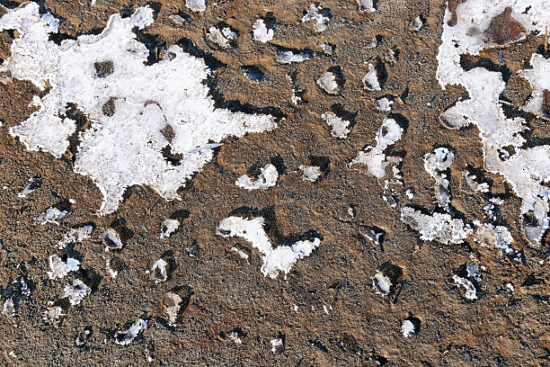This is not a comfortable subject to talk about after the last four years of COVID-19. Imagine that the next global pandemic doesn’t start with a virus leaping from another species to us, but rather from the consequences of anthropogenic climate change.
Permafrost covers 20% of the Northern Hemisphere. By definition, it is ground that stays frozen for at least two consecutive years. In the Arctic, Antarctica and alpine areas, permafrost persists.
Some areas of permafrost go through seasonal partial thaws. Much never does until recent years as polar regions and mountainous areas are increasingly impacted by global atmospheric warming.
What’s stored in permafrost is about what we need to be concerned. It contains an enormous amount of biomass, which is a natural carbon sink. That’s a good thing as long as the permafrost doesn’t melt. But biomass also contains what is being referred to as zombie viruses and bacteria.
In 2016, an anthrax outbreak in Siberia killed thousands of reindeer. The cause was traced to thawing permafrost that exposed a 75-year-old infected reindeer. The thaw had revived Bacillus anthracis, the anthrax bacterium that unfortunate reindeer ingested or inhaled.
It could just as well have been:
- variola virus, the cause of smallpox which killed between 300 and 500 million in the 20th century,
- the unknown influenza virus responsible for the global Spanish Flu pandemic that killed an estimated 50 to 100 million people between 1918 and 1920,
- Yersinia pestis, the bacterium responsible for the bubonic plague or Black Death of the 14th century which killed over 200 million.
Here are some recent permafrost discoveries.
- In 1997, an exhumed body in Alaska that was buried in 1918 contained viral fragments from the Spanish Flu virus.
- In 2012, a 300-year-old mummified body from Siberian permafrost contained traces of variola.
- In 2022, soil and sediments from Lake Hazen, a large Arctic body of melted freshwater in Canada yielded traces of viruses and bacterium suggesting meltwater spillover from permafrost could become a potential disease vector.
- In 2023, a Siberian study discovered 13 new viruses in permafrost samples with one of the viruses 48,500 years old. The viruses came in five different types: Pandoravirus, Cedratvirus, Megavirus, Pacmanvirus and Pithovirus. Some of these were capable of infecting microorganisms like amoebae, as well as plants and animals.
Today, scientists are increasingly concerned about the potential pandemic threat coming from the equatorial and polar areas of the planet. We know that mosquitoes, ticks, fleas and other wildlife can be common carriers of many equatorial diseases posing a threat: Malaria, Dengue, Zika, and Chikungunya, to name a few. But now we need to be on guard for viruses and bacteria emerging from the permafrost.
Today, we have a vaccine for smallpox and one for bubonic plague. We annually update influenza vaccines. But the zombie viruses and bacteria that have been buried in permafrost pose a threat because we have no recent exposure to them, meaning we won’t immediately have medical treatments to contain outbreaks. We won’t have built-up immunity either. That’s why there is an emerging Arctic monitoring network of scientists looking for viruses and bacteria that could come from permafrost and meltwater.
Although thawed permafrost contains traces of genomic information from viruses, Dr. Jonathan Stoye, a retrovirus researcher at the Francis Crick Institute in London, UK, notes that the “inherent instability of the viral nucleic acids” makes the likelihood of infection transmission less. He believes the greater threat would come from an awakening bacteria.
COVID-19 may have done humanity a favour. Our rapid response to it including new vaccines, and comprehensive global reporting, has us much better organized to recognize and fight an outbreak. Add permafrost to the list of disease vectors that include mosquitoes, ticks, fleas, rodents, snails, monkeys, bats, and other forms of wildlife posing a pandemic-starting threat.
















